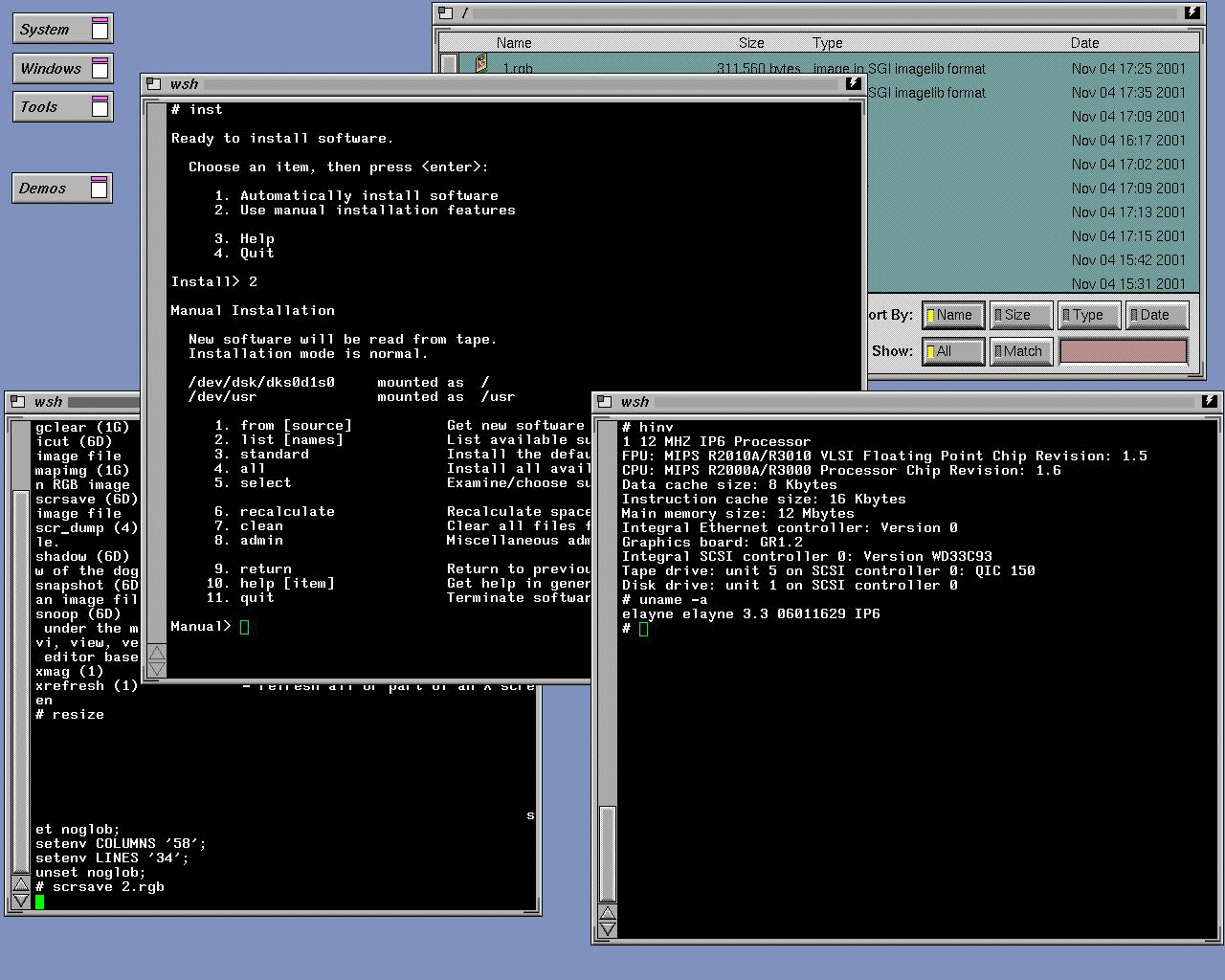
#Irix os history windows#
OS/2 sales were largely concentrated in networked computing used by corporate professionals however, by the early 1990s, it was overtaken by Microsoft Windows NT. Special versions of OS/2 2.11 and Warp 4 also included symmetric multiprocessing (SMP) support.
#Irix os history full version#
In 2000, the July edition of Australian Personal Computer magazine bundled software CD-ROMs, included a full version of Warp 4 that required no activation and was essentially a free release.
#Irix os history trial#
This suggestion was bolstered by the fact that this demo version had replaced another which was not so easily cracked, but which had been released with trial versions of various applications. This was seen as a backdoor tactic to increase the number of OS/2 users, in the belief that this would increase sales and demand for third-party applications, and thus strengthen OS/2's desktop numbers. The UK-distributed free demo CD-ROM of OS/2 Warp essentially contained the entire OS and was easily, even accidentally, cracked, meaning that even people who liked it did not have to buy it. A personal version of Lotus Notes was also included, with a number of template databases for contact management, brainstorming, and so forth. IBM also released server editions of Warp 3 and Warp 4 which bundled IBM's LAN Server product directly into the operating system installation. In 1996, Warp 4 added Java and speech recognition software. Windows NT could also support OS/2 1.x Presentation Manager and AVIO applications with the addition of the Windows NT Add-On Subsystem for Presentation Manager. One example of NT OS/2 1.x support is in the WIN2K resource kit. Some early NT materials even included OS/2 copyright notices embedded in the software. Windows NT's OS/2 heritage can be seen in its initial support for the HPFS filesystem, text mode OS/2 1.x applications, and OS/2 LAN Manager network support. While it waited for this new high-end system to develop, Microsoft would still receive licensing money from Xenix and OS/2 sales. From a business perspective, it was logical to concentrate on a consumer line of operating systems based on DOS and Windows, and to prepare a new high-end system in such a way as to keep good compatibility with existing Windows applications. In the end, Microsoft decided to recast NT OS/2 3.0 as Windows NT, leaving all future OS/2 development to IBM. Initially, the companies agreed that IBM would take over maintenance of OS/2 1.0 and development of OS/2 2.0, while Microsoft would continue development of OS/2 3.0.



IBM grew concerned about the delays in development of OS/2 2.0.


 0 kommentar(er)
0 kommentar(er)
